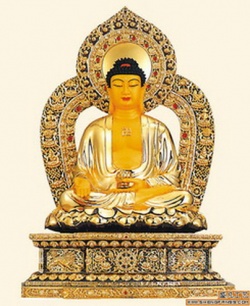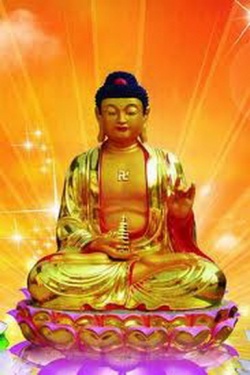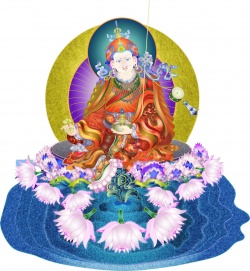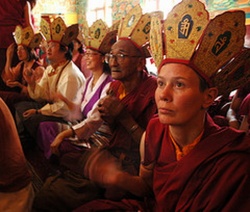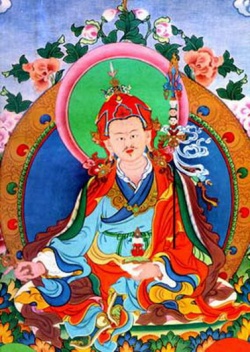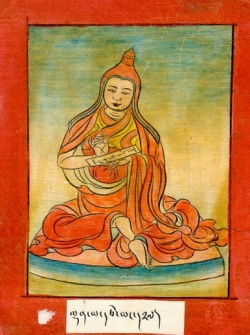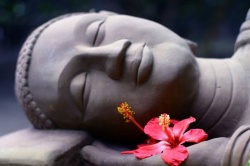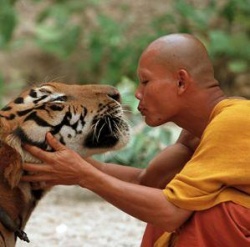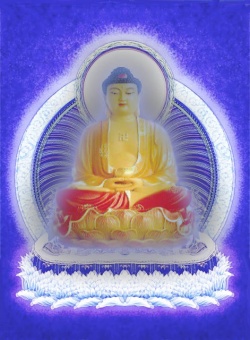At the Crossroads
Stephen Batchelor. Drawing from his experience in multiple traditions, the best-selling author of Buddhism Without Beliefs discusses his uniquely Western teaching style and Buddhism’s encounter with modernity.
Stephen Batchelor was born in Scotland and educated in Buddhist monasteries in India, Switzerland, and Korea.
In 1972, at the age of nineteen, he settled in Dharamsala, and in 1974 he ordained as a Buddhist monk in the Tibetan Gelug tradition. Three years later, he left the Tibetan tradition and traveled to Korea, where he practiced as a Zen monk.
Batchelor disrobed in 1985, when he moved to Devon, England to live and teach at the Sharpham Community and Gaia House.
There, Batchelor synthesized a distinctively Western teaching style, drawing from multiple Buddhist traditions.
Batchelor now lives in Aquitaine, in southern France.
A writer and photographer, he also leads retreats worldwide with his wife, Martine, who trained in the Korean Zen tradition.
He recently toured the United States, teaching retreats with a focus on integrating Buddhist ideas with meditation practice.
Tricycle Editor-in-Chief James Shaheen interviewed Stephen Batchelor in June 2002 after a retreat in Taos, New Mexico.
The retreat included a workshop on the work of Nagarjuna, the seminal third-century Indian philosopher.
You’ve said that Nagarjuna is arguably the most important voice since the Buddha himself. Why?
Nagarjuna’s significance was twofold: first, he went back to what he understood to be the central teachings of the Buddha; and second, it was the first time since the Buddha that a recognizable individual rearticulated the teachings in his own voice.
Nagarjuna opened up the possibility of Buddhism’s diversifying beyond the early schools into what have come to be known as the Mahayana traditions.
Yet although Mahayanists consider Nagarjuna a founding figure,
I find him interesting precisely because he belongs neither to the camp of early Buddhist traditions nor to the schools that follow him.
He’s a transitional figure; he stands between the past and the future, and that gives him a freedom to speak his own mind without defending an orthodoxy or establishing a new one.
Are we at a similar crossroads today? Is it our collective challenge to “reinterpret” the dharma, using our own idiom?
In a sense, yes, but as soon as you set out to reinterpret the teachings, you risk putting a distance between yourself and the dharma.
That’s a danger. It is important both to be firmly grounded in the dharma and to respond to the challenges in the world in which you live.
This has been the challenge every time Buddhism has gone from one culture to another: to be truthful to the sources of the tradition while articulating them in a way that meets the needs of one’s time.
Is teaching from multiple traditions one of the ways you face that challenge?
Perhaps. Each tradition has something to offer that the others don’t.
I’m attempting in my teaching to find a coherent model that draws equally upon the Tibetan teachings I received as a monk—philosophical, psychological,
and doctrinal—together with the practice of mindful awareness, or vipassana, with all of this then being shot through with the quality of perplexity, curiosity, and questioning that Zen koan practice engenders.
Studying in more than one tradition is common in the West. Why do you think that is?
With some exceptions, you can’t always expect a Westerner to identify fully with and take on a given Asian orthodoxy.
When we look at Buddhism historically, each of the traditions has developed in response to the needs of people in particular cultures at particular times, and each has left parts of the tradition in the shadows.
In the West we’re exposed to all of the different schools, which is unprecedented; we’ve also come to Buddhism with a whole new set of questions.
Many of us are more committed to the questions than to the givens of a certain orthodoxy. Inevitably, we draw from different Buddhist traditions.
Is there a downside to this?
There can be. One wouldn’t want to encourage dilettantism, just hopping from one set of teachings to another.
But provided one’s exposure to these traditions is something that continues on a long-term basis and is informed by an ongoing practice, I can only see it as an enrichment.
I’m finding more and more that my understanding of these different schools is beginning—I emphasize beginning—to resolve itself into an integral vision.
The different practices and ideas are sufficiently compatible—they are, after all, rooted in the same source—to complement one another quite naturally.
You seem to have a very pragmatic—perhaps scientific—approach to the dharma.
Where does that leave your view of reincarnation?
That’s a big can of worms. I can talk about it best in the context of my own story.
When I was a Tibetan Buddhist monk, I was trained to be a geshe, and believing in reincarnation was indispensable in order to teach with any kind of honesty in that tradition.
In fact, the teachings I received endlessly reiterated the point that if you didn’t come to terms with the doctrine of rebirth, then you really had no business being a Buddhist.
How did you resolve that conflict?
As a young monk, I’d literally wake up in the middle of the night in a cold sweat agonizing over my doubts about reincarnation; it was so central a belief.
I desperately tried to believe in it, and I sought all manner of confirmation—empirical studies of children, people’s claims of past lives—but none of it convinced me.
I realized I was struggling to believe in something that deep down I knew I couldn’t accept uncritically.
Then one day it dawned on me that even if I found proof that after death there’s no continuity whatsoever, it would not make any difference at all in terms of my commitment to the practice of the dharma here and now.
Why is that?
The traditional line is that without reincarnation, your concerns will be limited to this life and nothing beyond it.
But I don’t think that holds true. You needn’t believe in reincarnation to accept that the impact of your actions will outlast your present existence and continue to generate effects.
I realized that my practice and my commitment to Buddhism simply didn’t depend on a belief in rebirth.
And it became quite clear that one could engage in practice without the superstructure of that metaphysic to prop it up.
Where do you stand now?
I’ve come to hold an agnostic position.
I do not dogmatically deny rebirth, because I think to do so would be as closed-minded as an uncritical affirmation of it. I simply allow it to remain open as a question.
In other words, I allow myself to encounter the mystery of death, to accept that we don’t know what happens after we die.
An absolute belief in rebirth strikes me as a denial of death, an elaborate and intellectually sophisticated set of ideas that that dulls the existential edge of death’s bite.
How was it different for you when you studied Zen?
Rebirth was such a minor issue in the overall teaching that it really had little if any impact on the actual practice.
And I find passages in the Pali texts stating that whether you believe in rebirth really doesn’t matter in terms of the basic validity and usefulness of the practice.
It seems fairly evident that the belief was simply part of the Indian worldview the Buddha inherited.
Admittedly, Buddhists developed and refined theories of rebirth considerably, but it seems to be a relic of ancient Indian culture that has attached itself to Buddhism throughout its history, and that is perhaps no longer necessary.
Although you take the agnostic position, you seem to lean in favor of doubt. Is that right?
What I find difficult is how one can possibly square rebirth with what we currently understand about the evolution of the human organism and the nature of the brain.
There seems to be no room for a disembodied ghostly consciousness that inhabits the body-brain, and then, when the body-brain dies, persists as an immaterial entity that goes on to another birth.
I simply cannot buy that view. Not so much because I can disprove it, but because it goes so much against what I understand of the natural sciences. But again, the current scientific paradigm could shift in ways we cannot foresee.
One has to keep an open mind.
Aside from your doubts, were there other reasons you left your Tibetan practice?
Yes. I studied with Geshe Ngawang Dhargyey and Geshe Rabten for about eight years.
The latter part of my training with Geshe Rabten was a very rigorous program that involved study in the Tibetan language, memorization of texts, debating in Tibetan, and study in technical areas of Buddhist philosophy.
That training was invaluable in laying the foundation for what I’ve subsequently come to write and teach.
The problem was that after about eight years, I found that the emphasis in the Gelugpa school on analytical study, memorization, and debate was becoming so intellectually top-heavy that I was losing touch with the spiritual questions that had brought me to Buddhism in the first place.
I desperately needed a grounding in experiential practice, a pared-down simplicity that characterized some of the Theravada and Zen traditions.
I had already been introduced to Vipassana meditation by S. N. Goenka, and that opened up for me a dimension of meditative experience that I simply hadn’t come across with the Tibetans.
In my training with Geshe Rabten the material was getting so abstruse that the conflict with my own need for a more sustained and formless meditation practice was impossible to resolve without leaving.
How did your Tibetan teachers react to your leaving?
It was not something that they greatly appreciated or approved of, and for me it was a real struggle.
I had a sense of loyalty and allegiance, as well as an enormous amount of respect for Geshe Rabten, and I always will. It was very difficult to break with him. He had given me a great deal, and I could understand from his point of view how this was a fairly strange way to repay that kindness.
But once I left to train in Zen, I never returned to the Gelug tradition.
To what extent are the teachings of Geshe Rabten still with you?
I found in my Zen practice in Korea, and more recently in my ongoing commitment to basic mindfulness practice, that the ideas I received from the Gelugpa provided me with a way to integrate an intellectual understanding of Buddhism with an understanding rooted in experiential practice.
I’ve come to value the philosophical ideas that Geshe Rabten taught more and more. And in that respect, I’m coming back to my Gelugpa roots.
I also realize that I still share many of the ideas that are central to the Gelugpa philosophical position.
For example?
One of the things that has stayed with me is the Gelugpa emphasis on understanding precisely what is negated when you say “no self” or “emptiness.”
The danger, which my teachers pointed out again and again, is that if you negate too much—just wipe out the idea of self—you succumb to a nihilistic extreme.
And an absurd one, too; consider the statement “I don’t believe that there is a self.”
That begs the question, well, who is this “I” then? Who is this “self” that doesn’t believe he has a self?
The other extreme is not to negate enough, to feel you can reduce some of your excessive self-centeredness and egoism by reining in the selfish impulses a bit and being a little nicer, not so uptight.
That’s far too weak; in fact, it’s nothing more than a psychological palliative.
How do we navigate the middle?
It’s important to recognize what aspect of your sense of self is a delusive fiction—in other words, an exaggeration, a belief in a permanent essence of “me,”
that kind of tight, fixed self that gives you a sense of basic existential security in this life, and the clinging that goes into affirming that.
Somewhere in the middle is a view that the self is not a fixed, permanent thing, but an ongoing narrative process.
It’s dynamic, it’s interactive, it’s engaged in moral choices, it has goals, it has aspirations, and it is also what allows us to function as a society, as a plurality of stories, selves that interact and share experiences, learning from and teaching one another.
“Selfing” is simply the evolutionary strategy that human beings, probably for biological and adaptive reasons, have been landed with. There’s nothing deluded or neurotic about being a self in that way.
It’s actually a very liberating perspective on the nature of the individual, one that cannot be abandoned without lapsing into both logical and existential contradictions.
But if we mistake the dynamic, adaptive self for something static, we deny ourselves the possibility of awakening, of nirvana, of ease.
The paradox is that an exaggerated sense of self—a self that is fixed—at first seems to offer security.
But in fact, it generates ongoing anxiety, turmoil, and unease as an unrelenting reality chips away at our illusions, and we cling to whatever we think will prop it up.
It alienates us from the complex interdependent environment in which we coexist with others.
I think that what the Buddha was actually on about was breaking through the illusions that generate alienation.
That’s a contemporary term, obviously, but it seems a particularly apt one in this case.
You use plenty of contemporary terms in your teachings and translations. Papanca, for instance, becomes “fixation” and the proliferation of thoughts that follow; klesha becomes “compulsion”; nirvana, “ease.”
Why?
Anyone who is foolhardy enough to embark on translating classical texts discovers the almost impossible challenge of taking a classical Buddhist term and finding for it an adequate word in English.
A translator’s challenge is to make a text come alive in a culture for which it was not initially intended.
The act of translating Buddhist texts can serve as a metaphor for the broader question: “What does Buddhism mean?”
In the wider sense, how do we translate the language of Buddhism’s host cultures into a language that works in our own without diluting the imperatives of the tradition?
How do we present the tradition in a way that meets people’s needs, that answers people’s questions?
Often the words you use in translation, like “fixation” and “compulsion,” have strong psychotherapeutic associations.
Are you suggesting that Buddhist practice can alleviate compulsions or fixations?
It depends. First of all, we have to look at the nature of that particular kind of compulsive behavior.
It could be that that compulsive behavior is rooted in the unmet needs of a child; it could have psychological origins, or biological ones.
There’s a whole range of reasons a person might behave in a compulsive or an addictive way, and it would be naive to think that Buddhism is somehow a blanket solution for all kinds of compulsion and fixation.
Why is that?
Buddhism is not primarily concerned with pathologies; it is concerned with existential dilemmas.
And so when we talk of fixation and compulsion, we’re not talking about, say, drug addiction, although you could argue that it is an extension of the fixation process; we’re talking about an existential condition that all human beings, whether they are sick or not, whether they are pathologically troubled or not, share.
But in terms of dealing with these more existential fixations, Buddhism offers an array of practices and philosophies that can help us to understand our fixations—particularly with self.
More importantly, Buddhism offers strategies whereby we can learn to diminish obsessions and compulsions in such a way that we can experience for ourselves the possibility of no longer being enslaved by them.
And that has to be the litmus test of the liberative validity of our practice: if it does not lead to a diminishment of these patterns of behavior—even a temporary suspension of them with deep spiritual insights—then you have to consider whether the practice is working.
There are times it would be easy to conclude that it isn’t!
We’re dealing with habits and patterns that are so deeply embedded that they seem to be innate.
Overcoming them is not going to happen by practicing meditation for a few years.
It may be something that one spends one’s whole life struggling with.
You may feel that the more you practice, the less you know and the less sure you are that Buddhism can resolve your deepest dilemmas.
Inevitably, you begin to come up against the sheer scale of the challenge that Buddhism is presenting.
And to that extent, Buddhism is not just a kind of souped-up, self-applied psychotherapy that with a bit of tinkering and a taking on of the right ideas will sort out your existential questions.
In fact, what Buddhism proposes is enormously demanding, sometimes almost impossibly demanding.
Seeing that brings a realism to one’s practice that a less articulated and a less philosophically rigorous approach to Buddhist practice will not.
You make nirvana sound all but inaccessible. And yet when you translate nirvana as “ease,” it becomes so present. Can you address that apparent contradiction?
There is a tendency to look at awakening as something either immanent or transcendent.
Those are not terms that one classically finds in Buddhist languages. They are terms borrowed from Christian theology.
Broadly speaking, a theology of immanence posits that the divine lies at the very heart of the experience you have here and now, that God is within you, closer to you than anything else that exists.
The transcendent perspective would be one that emphasizes the absolute otherness of an unknowable God, that one can simply surrender oneself in faith to this transcendent power, to God’s will.
Buddhism does not speak of God, but in its understanding of awakening, we find discourses that clearly diverge along immanent and transcendent lines. The immanent view is perhaps most evident in Zen.
But you find it also in the Tibetan schools, the notion that enlightenment is something that is already fully present within you.
It’s just a question of allowing yourself to wake up to that fact.
The transcendent position sees enlightenment as an almost impossibly distant goal, something that you have to strive for countless rebirths to achieve.
Buddhahood then becomes a remote and idealized object of devotion.
There are dangers both ways.
If we emphasize immanence, we run the risk of ignoring the vast difference between awakening and our current state of delusion.
On the other hand, if we raise enlightenment into something almost humanly impossible,
then we run the danger of denigrating our own capacity for really making any significant change at all.
We have to recognize that our human experience is not reducible to either a gradualistic temporal paradigm—in other words,
one in which you start from delusion and slowly get enlightened—or reduced to a kind of multi-perspectival paradigm in which enlightenment is already present,
and it’s just a question, as it were, of allowing that door to open.
Human existence is more complicated than that; it entails development over time toward goals that are quite other than your experience.
At the same time, we need to be open to the possibility of qualities of awakening breaking into our lives at any moment.
The practice therefore is learning to live at the juncture between a vertical dimension of depth and immanence and a horizontal dimension of time and transcendence.
And where we find ourselves here and now is at that juncture.
We run great risks by privileging one dimension over the other. In the course of one’s practice, one finds that one moves from one pole to the other, one shifts along the spectrum according to need.
Where do you find yourself on the spectrum now?
I first got into Buddhism from a secular, hippie subculture.
I didn’t need teachers to tell me that the Buddha was already inside me, because I’d found that out on LSD.
I needed a paradigm of transcendence, to surrender myself to a vision far greater than my own.
My early years of training were very much within that devotional context. Later, this process of surrender, of transcendence, became a process of alienation.
The goals of the practice were so impossibly remote that my own experience was somehow devalued.
It was a breath of fresh air to come to some of the Vajrayana teachings and also to the Zen practices in which the immediacy and the immanence of enlightenment here and now were primary.
The practice is essentially one of living one’s life in such a way that those possibilities can much more readily break through. And so in that sense my shift was back toward immanence.
But one has to honor the imperatives of both.
Where would you advise a newcomer to Buddhism to begin?
First you need to be clear about how important the dharma is to you.
Is it really the most important thing in your life?
Or is it something that you need to support leading a family or a professional life?
If a person—and particularly a young person—really wishes to devote themselves to the practice of the dharma, then I would encourage them to go as deeply into the sources of the tradition as they can.
And I would have no preference for whether that be a Zen, Tibetan, or Theravada approach.
They also need to be willing to suspend a lot of their Western rationalizations, prejudices, preferences, beliefs, and just plunge into the sources of the school they pick. And that can be enhanced by two factors.
First, finding a traditional teacher who doesn’t make any compromises with Western desires, who simply presents the tradition as it has been passed down to him, and who embodies it fully in his own life.
And second, to learn one of the classical Buddhist languages, because it gives you an access to the tradition that at present cannot be adequately conveyed by translated materials alone.
So that would be my advice.
But I would also say that one must be aware of the danger of then becoming somehow stuck in such a school, of taking on the sectarianism we find in many Asian Buddhist schools.
It’s important not to cut oneself off from the greater richness and diversity of the tradition.
But before one begins exploring other traditions, one should be rooted in at least one, so that one is coming at these other teachings from a position of experience.
I certainly would not be doing what I do now had I not had such a traditional training.
It informs everything I do.
What would you say is particularly characteristic of the development of the dharma in the West?
It’s very difficult for those of us who are actually in this forest to see what’s going on because we’re too caught up with the trees. But there are a number of key points.
The encounter with the diversity of traditions is one, and the fact that we now have a generation of teachers who have had firsthand experience with many different schools.
Also, as Westerners we view this process as an historical one; we look back on the history of Buddhism and see it as a sequence of contingent events.
We see that the forms of Buddhism are conditioned by the diverse circumstances in which they arose.
We also recognize that once those conditions cease to exist, those forms will either change or die out.
That perspective allows us to envisage a form of Buddhism not focused so much on preservation, although there is a role for that, but one in which we are involved in its ongoing creative transformation.
So you see an opportunity here?
Of course. I certainly see dangers, too.
It would be naive to think otherwise. To me the two great dangers are first that Buddhism could simply be subsumed into psychotherapy, let’s say,
or a kind of feel-good New Age–type philosophy, and it would lose its distinctive identity. It would just get parceled off into different arenas of contemporary discourse.
And we see that happening.
The other danger is that Buddhism could just survive in marginalized, ghettoized groups that remain slavishly true to particular Asian orthodoxies and that have no real interest in an actual encounter with modernity.
Can you explain what you mean by “encounter with modernity”?
One of the defining characteristics of Buddhism’s presence in the West is its having to come to terms with an egalitarian society, an increasingly globalized world, a heritage of Judeo-Christian thought,
of Greek philosophy, the emergence of a scientific worldview, sophisticated technologies, universal education, a woman’s control of her own reproductive rights, and an unprecedented understanding of the cosmos and the brain.
These things have been largely alien to the societies in which Buddhism grew up. Buddhism’s Asian, premodern past cannot offer answers to all the questions that are posed by this kind of worldview.
And Buddhism has found itself suddenly propelled from preindustrial, premodern societies for the most part, with perhaps the exception of Japan, into an arguably postmodern world.
The encounter between these two ways of thought has extraordinary potential; but simply to feel that Buddhism as we now know it has all the answers to our particular questions, if we could just have sufficient faith in the teachings, would be a mistake.
If we look back at how Buddhism has moved from one culture to another, we see that it has usually taken two or three hundred years for the new host culture to come to terms with it.
On the other hand, there’s often a kind of conceit in the West that our society is particularly corrupt, or that we’re excessively obsessed with self, that we’re constantly running from one place to another at such high speeds.
We think there’s something uniquely awful about the modern West.
But what’s especially striking in the Pali texts is how clearly and directly they seem to be speaking to our condition now. You have to remember that it was 2,500 years ago that these ideas were produced.
And clearly they’re not simplistic; the more you look into them, the more you find they’re highly intelligent, they’re experientially verifiable, they’re coming from an age almost unimaginable to us in terms of cultural difference, and yet they still speak to us. That’s truly amazing.
Source
http://www.stephenbatchelor.org/index.php/en/at-the-crossroads
